Discover 25 hidden attractions, cool sights, and unusual things to do in Vietnam. Don't miss out on these must-see attractions: Independence Palace (Ho Chi Minh City), Vietnam Museum of Ethnology (Hanoi) or War Remnants Museum (Ho Chi Minh City).
Below, you can find the list of the most amazing places you should visit in Vietnam.
Table of Contents
Independence Palace, Ho Chi Minh City
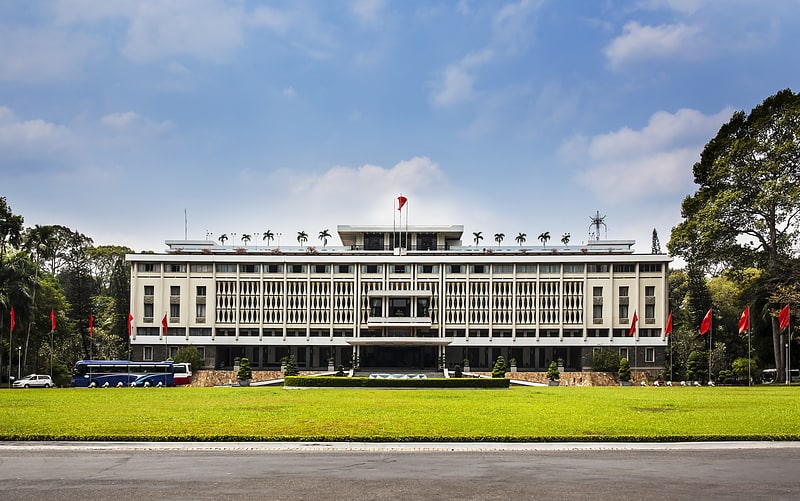
Also known as: Dinh Độc Lập
Prominent government center during war. Independence Palace, also publicly known as Reunification Convention Hall, is a landmark in Ho Chi Minh City, Vietnam. It was designed by architect Ngô Viết Thụ and was the home and workplace of the President of Republic of Vietnam. It was the site of the Fall of Saigon on 30 April 1975 that ended the Vietnam War, when a North Vietnamese Army tank crashed through its gates.[1]
Address: Ho Chi Minh City, 135 Nam Ky Khoi Nghia Street, District 1, Ho Chi Minh City, Vietnam
Vietnam Museum of Ethnology, Hanoi
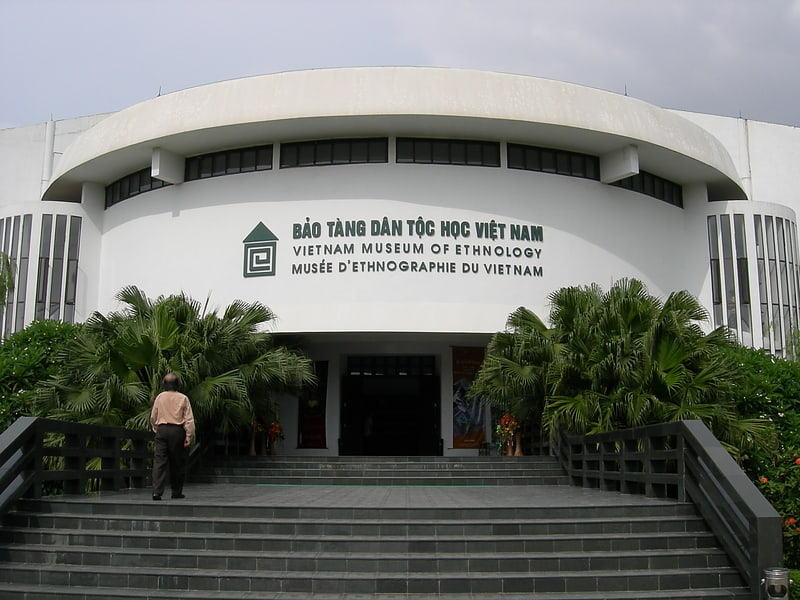
Also known as: Bảo tàng Dân tộc học Việt Nam
Large museum with cultural exhibitions. The Vietnam Museum of Ethnology is a museum in Hanoi, Vietnam, which focuses on the 54 officially recognised ethnic groups in Vietnam. It is located on a 43,799-square-metre property in the Cầu Giấy District, about 8 km from the city center. The Museum is a member of the Vietnam Academy of Social Sciences - an academic institution of the Vietnamese Government.
A second exhibition building was open in 2013 and has a focus on Southeast Asian cultures and peoples.[2]
Address: Nguyễn Văn Huyên, 100000 Cầu Giấy
War Remnants Museum, Ho Chi Minh City
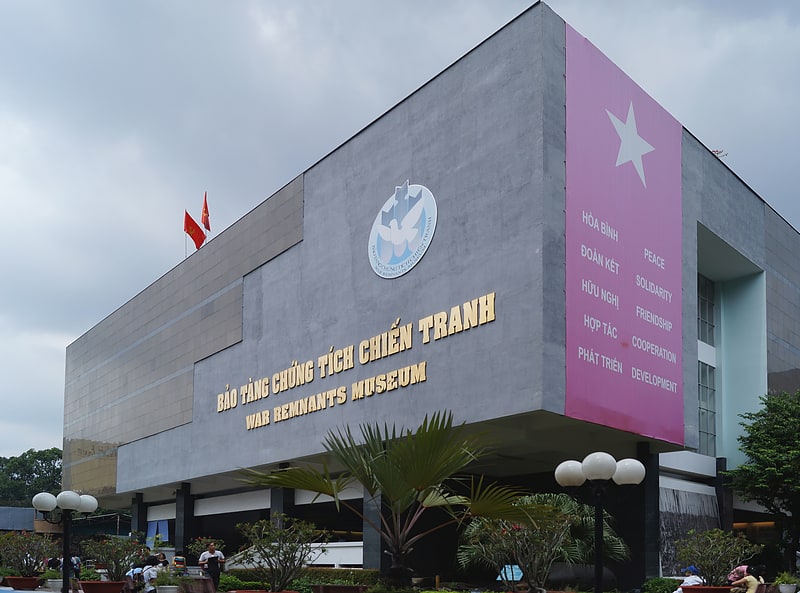
Also known as: Bảo tàng Chứng tích chiến tranh
Military equipment and photos on display. The War Remnants Museum is a war museum at 28 Vo Van Tan, in District 3, Ho Chi Minh City, Vietnam. It contains exhibits relating to the First Indochina War and the Vietnam War.[3]
Address: 28 Võ Văn Tần, 700000 Quận 3 (Quận 3)
Temple of Literature, Hanoi
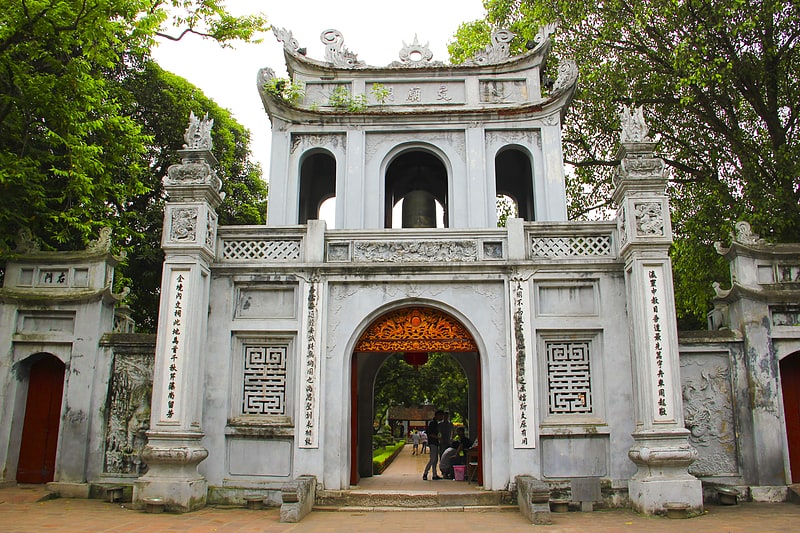
Also known as: Văn Miếu - Quốc Tử Giám
Temple in Hanoi, Vietnam. Văn Miếu is a temple dedicated to Confucius in Hanoi, northern Vietnam. The temple also hosts the Imperial Academy, Vietnam's first national university. The temple was built in 1070 at the time of Emperor Lý Thánh Tông. It is one of several temples in Vietnam which is dedicated to Confucius, sages and scholars. The temple is located to the south of the Imperial Citadel of Thăng Long. The various pavilions, halls, statues and stelae of doctors are places where offering ceremonies, study sessions and the strict exams of the Đại Việt took place. The temple is featured on the back of the 100,000 Vietnamese đồng banknote. Just before the Vietnamese New Year celebration Tết, calligraphists will assemble outside the temple and write wishes in Chữ Hán. The art works are given away as gifts or are used as home decorations for special occasions.[4]
Address: 58 Quốc Tử Giám, 100000 Đống Đa
Presidential Palace, Hanoi
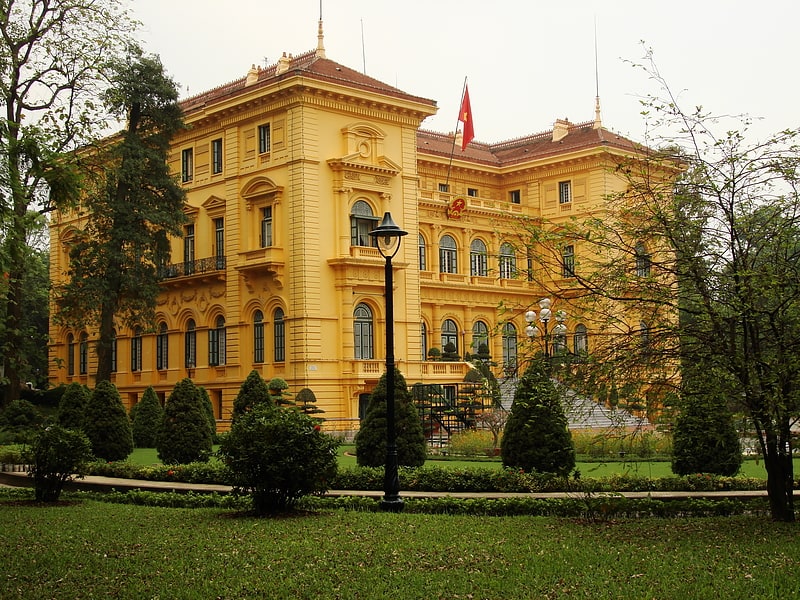
Also known as: Phủ Chủ tịch
French Colonial mansion from the 1900s. The Presidential Palace of Vietnam located in the city of Hanoi, was built between 1900 and 1906 to house the French Governor-General of Indochina.[5]
Address: Số 2 Hùng Vương, 118708 Ba Đình
Notre-Dame Cathedral Basilica of Saigon, Ho Chi Minh City
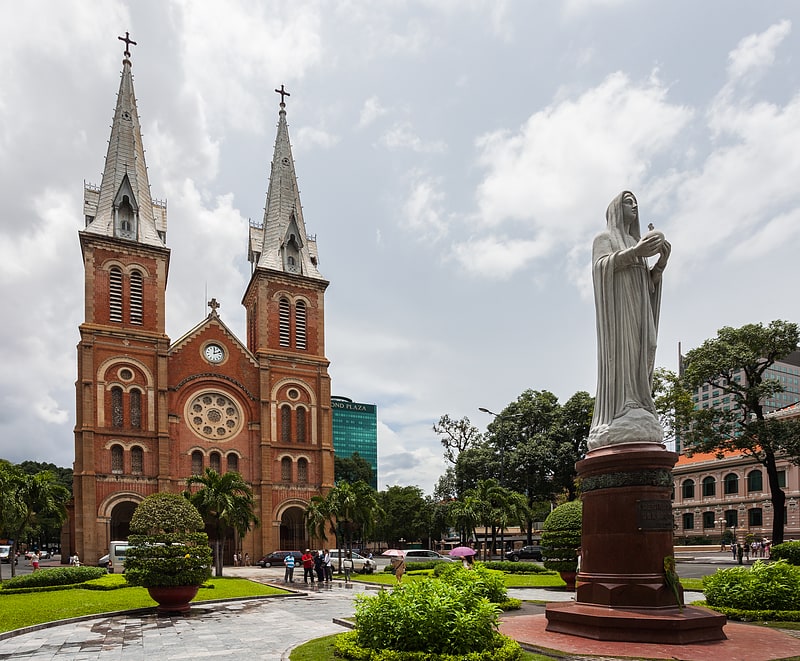
Also known as: Nhà thờ chính tòa Đức Bà Sài Gòn
19th-century European-style cathedral. Notre-Dame Cathedral Basilica of Saigon, officially Cathedral Basilica of Our Lady of The Immaculate Conception is a cathedral located in the downtown of Ho Chi Minh City, Vietnam. Established by French colonists who initially named it the Church of Saigon, the cathedral was constructed between 1863 and 1880. The name Notre-Dame Cathedral has been used since 1959. It has two bell towers, reaching a height of 58 meters.[6]
Address: 01 Công xã Paris, Ho Chi Minh City (Quận 1)
Po Nagar, Nha Trang
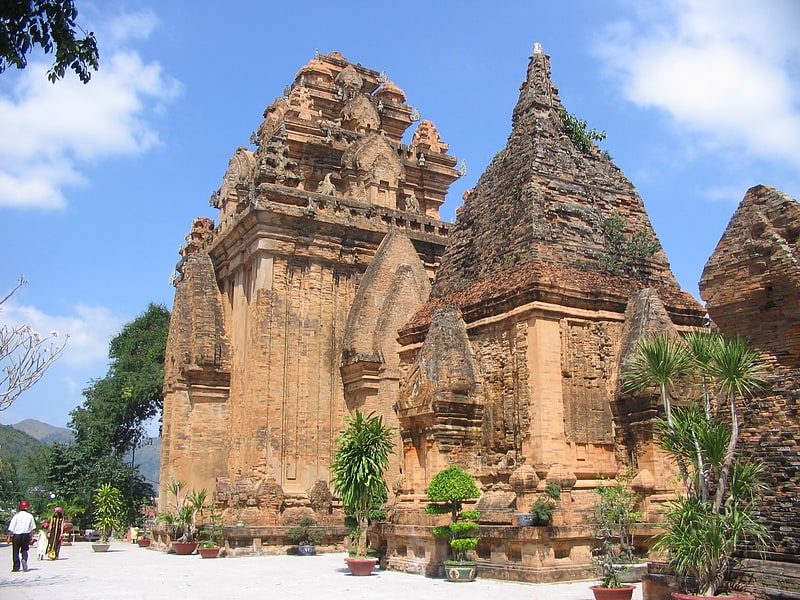
Landmark hillside temple with exhibits. Po Nagar is a Cham temple tower founded sometime before 781 C.E. and located in the medieval principality of Kauthara, near modern Nha Trang in Vietnam. It is dedicated to Yan Po Nagar, the goddess of the country, who came to be identified with the Hindu goddesses Bhagavati and Mahishasuramardini, and who in Vietnamese is called Thiên Y Thánh Mẫu.[7]
Address: 2 Tháng 4, 650000 Thành phố Nha Trang
Thien Mu Pagoda, Hue
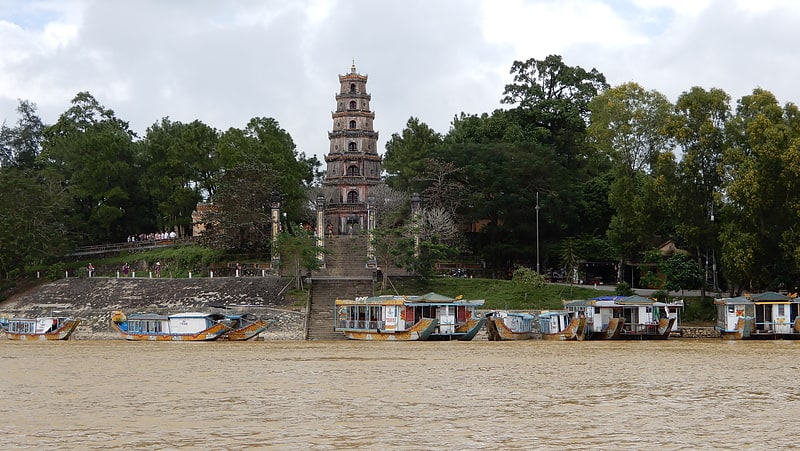
Also known as: Chùa Thiên Mụ
Historic 7-story Buddhist temple. The Pagoda of the Celestial Lady is a historic temple in the city of Huế in Vietnam. Its iconic seven-story pagoda is regarded as the unofficial symbol of the city, and the temple has often been the subject of folk rhymes and ca dao about Huế.
The pagoda sits on the Hà Khê hill, in the ward of Hương Long in Huế. It is around 5 kilometres from the Citadel of Huế constructed by the Nguyễn Dynasty and sits on the northern bank of the Perfume River.[8]
Address: Kim Long Road, Hue
Alexandre Yersin Museum, Nha Trang
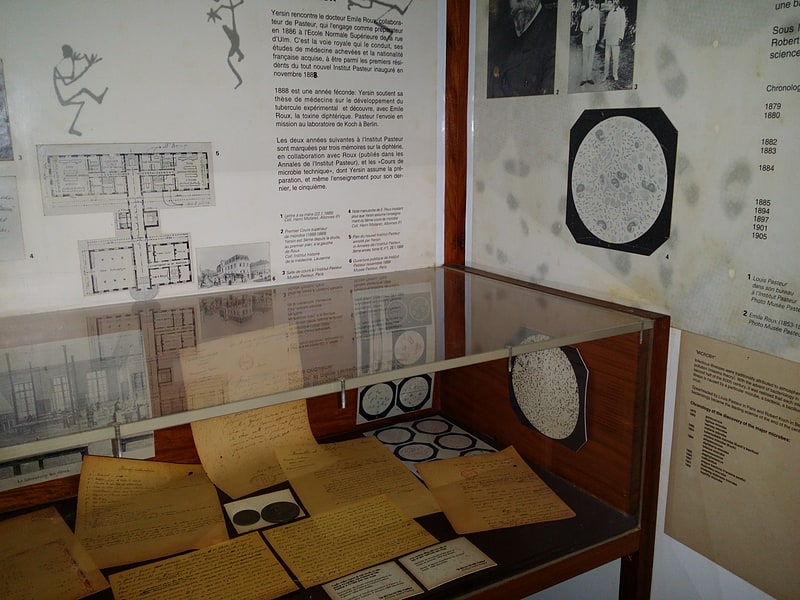
Museum in Nha Trang, Vietnam. The Yersin Museum is a museum in Nha Trang, Vietnam. It is dedicated to Alexandre Yersin, the French-Swiss bacteriologist.
It is located on 8 - 10 Tran Phu Boulevard in the former home of Yersin and in the enclosure of the Pasteur Institute.
The museum contains a large collection of Yersin's research equipments and letters as well as provides a description of his contributions to bacteriology, medicine, and science. The captions are in French with accompanied English and Vietnamese translations. It is open from 8am until 11am and 2pm until 4:30pm weekdays and closed on Saturdays and Sundays. Entry fee is VND 26,000 for adults.[9]
Address: 8 - 10 Tran Phu St, Nha Trang
Christ the King Cathedral, Nha Trang

Also known as: Nhà thờ Núi Nha Trang
The Christ the King Cathedral, also called Nha Trang Cathedral, is the mother church of the Catholic Diocese of Nha Trang in central Vietnam.
The parish was founded in 1886 by French missionaries. The present church was built in Gothic Revival style in 1928 as a parish, depending on the Apostolic Vicariate of Quinhon. It was consecrated on Easter 1930 under the title of "Christ the King". Then she was attended by a famous French priest in the Foreign Missions of Paris, Louis Vallet (1869-1945), who is buried next and devoted his life to his parishioners.
When the apostolic vicariate was erected in 1957 and the diocese created in 1960, with Monsignor Paquet, from the Foreign Missions, as first bishop, the church was chosen as the cathedral.
The cathedral, very well located in the upper part of this coastal city, has a remarkable amount of stained glass windows depicting saints, including several French saints, as St. Joan of Arc, and St. John Vianney, and also episodes from the life of Jesus.[10]
Address: 31 Thai Nguyen street., 650000 Nha Trang
Tomb of Tu Duc, Hue
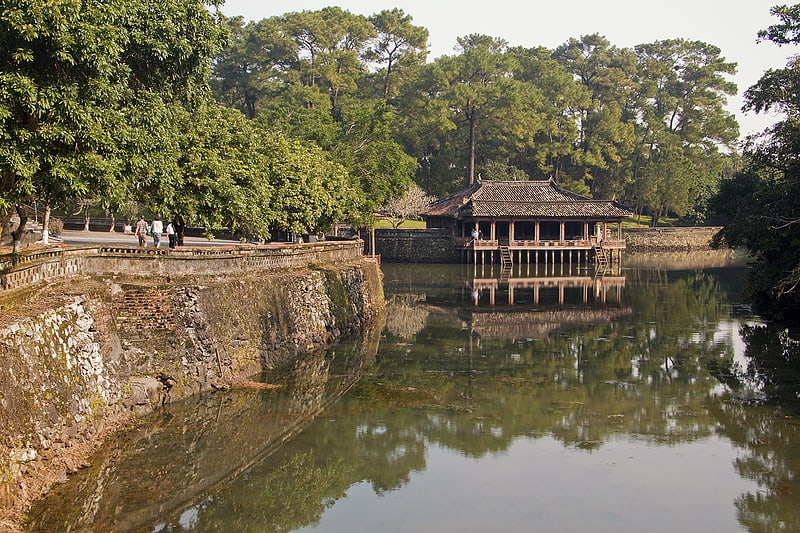
Also known as: Lăng Tự Đức
Historic tomb complex in a scenic locale. Tomb of Tự Đức, officially Khiêm Mausoleum, is located in Huế, Vietnam. It is built for the Nguyễn Emperor Tự Đức and took three years to build from 1864–1867. It is divided into a Temple Area and a Tomb Area.[11]
Address: Tay Nhat Hamlet, An Cuu Village, 530000 Hue
Huế Museum of Royal Fine Arts, Hue
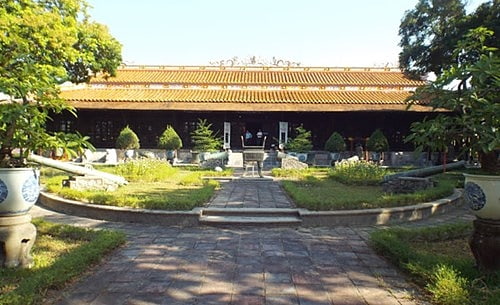
The Huế Museum of Royal Fine Arts is a museum dedicated to Vietnam's imperial past and arts of that era. It is located in the former imperial capital of Huế.
By royal decree of 1927, a section for the art of Champa was also instituted. In 2016, an exhibition called "Royal Treasures of the Nguyen dynasty" was shown, with pieces that were moved to Hanoi after 1945 for safekeeping.[12]
Sa Huynh, Hoi An

Museum in Hội An, Vietnam. The Sa Huynh Culture Museum is located in Hội An, in the Quảng Nam Province of central Vietnam. It is a museum showcasing the pre-historic Sa Huỳnh culture, showcasing terracotta work that has been found in the area.
The museum was established in 1994, and displays a unique collection of artefacts from Sa Huynh culture, considered to be the first settlers of the port town, who cooperated and traded with countries in Southeast Asia, South India and China. This collection provides visitors with useful information about the ancient Sa Huynh culture's inhabitants and is mostly related to burial customs, conceptions of life and death, the developmental history of the region, and relationships with other cultures. Of particular significance is a collection from Bai Ong - a site on Cham Island - which traces Sa Huynh culture back by 3000 years. These collections are considered the largest and most unusual collection of Sa Huynh artefacts in Vietnam.[13]
Address: 149 Trần Phú, Hoi An
Museum of Trade Ceramics, Hoi An
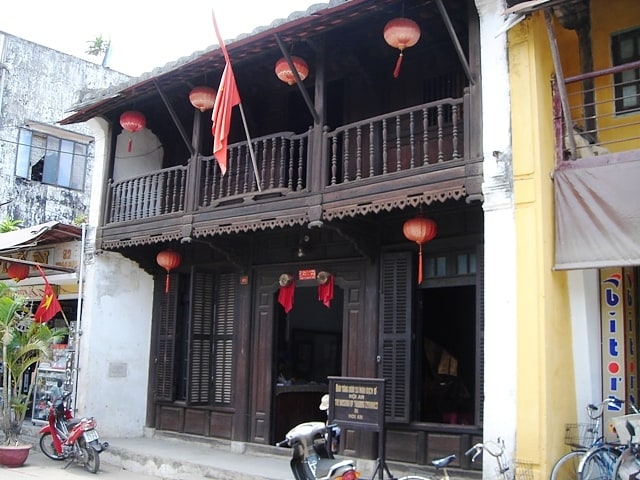
Museum in Hội An, Vietnam. The Museum of Trade Ceramics is located in Hoi An, central Vietnam. It is a museum showcasing the origins and history of the town and the region in the context of historic trade and relationships with foreign nations such as China, India, Japan, the Philippines and Thailand. The building housing the museum is itself an attractively restored traditional wooden house of Hoi An's old quarter, which, on account of design similarity and a historically significant local Japanese trading community, is likened to those of Kyoto.[14]
Address: 80 Trần Phú, Hoi An
Museum of Cham Sculpture, Da Nang
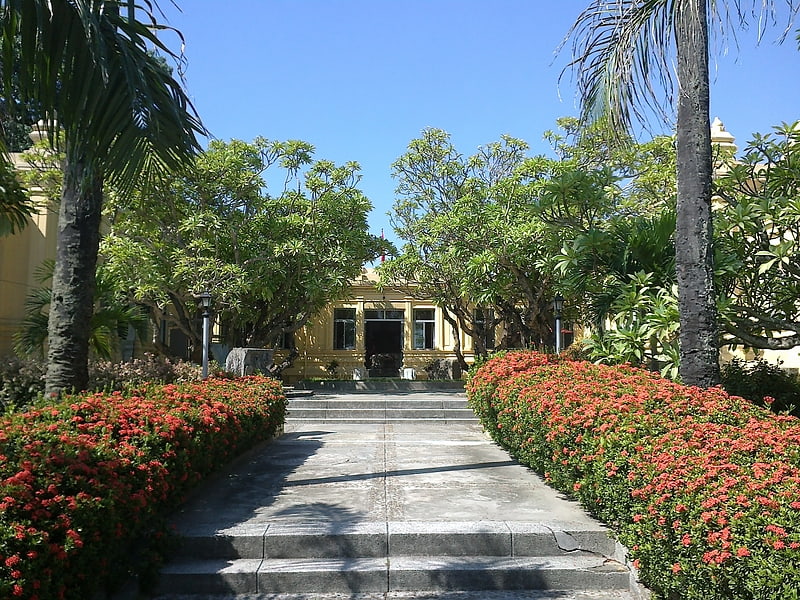
Also known as: Bảo tàng Nghệ thuật điêu khắc Chăm Đà Nẵng
Museum in Da Nang, Vietnam. The Museum of Cham Sculpture is a museum located in Hải Châu District, Đà Nẵng, central Vietnam, near the Han River.
The establishment of a Cham sculpture museum in Da Nang was first proposed in 1902 by the Department of Archaeology of EFEO. Henri Parmentier, a prominent archaeologist of the department, made great contributions to the campaign for its construction. Reportedly founded in 1915 as the Musée Henri Parmentier, its first building opened in 1919 and was designed by two French architects, M. Deleval and M. Auclair, who were inspired by Parmentier to use some traditional Cham elements in the composition. Prior to the establishment of the museum, the site was known as the "garden of sculptures" and many Cham sculptures that had been collected in Da Nang, Quảng Nam and elsewhere had been brought there over the preceding twenty years.
The museum has been expanded twice. The first expansion was in the mid-1930s, with two new galleries providing display space for the objects added in the 1920s and 1930s. Henri Parmentier directed the display based on the areas where sculptures were found. The 1000 meter square of floor space was arranged for the collections of Mỹ Sơn, Trà Kiệu, Đồng Dương, Tháp Mẫm, Quang Tri, Quảng Ngãi, Bình Định and Kon Tum. In 2002, the Museum was again expanded with the two-story building providing an additional 1000 square meters. The new building provides not only space for display, but also for storage, a library, a restoration workshop and offices for staff.
Before 2007, the Museum was managed by Da Nang Museums, an administrative organ in charge of the city's museums and heritage. In 2008 it became affiliated with the city Department of Culture, Sport and Tourism.
The museum houses the world's largest collection of Cham sculpture and is a popular tourist destination.[15]
Address: No 2, 2 Thang 9 Street, Da Nang
Hang Sơn Đoòng, Phong Nha – Kẻ Bàng National Park
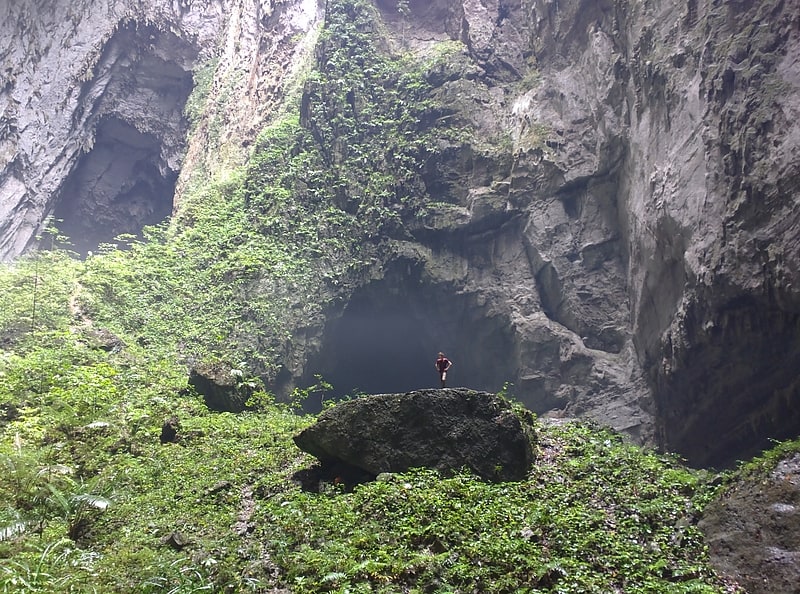
Cave in Vietnam. Sơn Đoòng cave, in Phong Nha-Kẻ Bàng National Park, Bố Trạch District, Quảng Bình Province, Vietnam, is one of the world's largest natural caves.
Located near the Laos–Vietnam border, Hang Sơn Đoòng has an internal, fast-flowing subterranean river and the largest cross-section of any cave, worldwide, as of 2009, believed to be twice that of the next largest passage. It is the largest known cave passage in the world by volume.
Its name, Hang Sơn Đoòng, is variously translated from Vietnamese as 'cave of the mountain river' or 'cave of mountains behind Đoòng '.
As a solutional cave, it was formed in soluble limestone and is believed to be between 2 and 5 million years old.[16]
Old house of Tan Ky, Hoi An
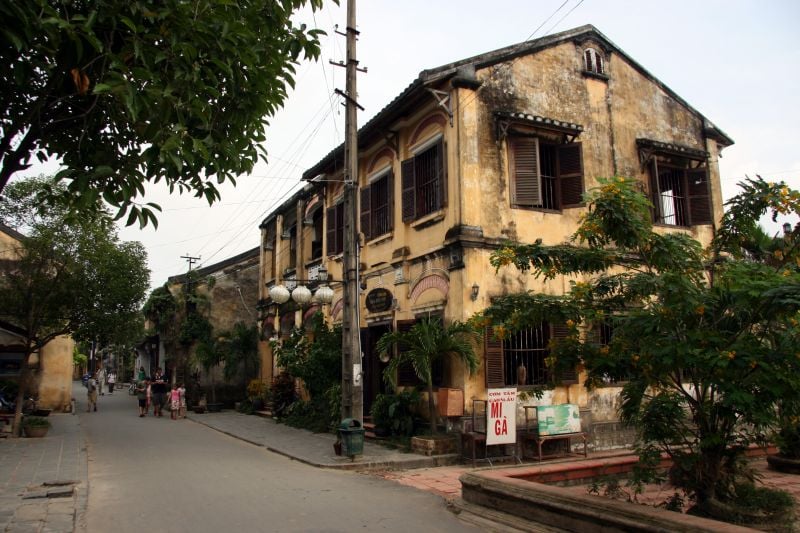
Museum, Historical place
Address: 101 Nguyen Thai Hoc Street, 100000 Hoi An
Thuận Phước Bridge, Da Nang
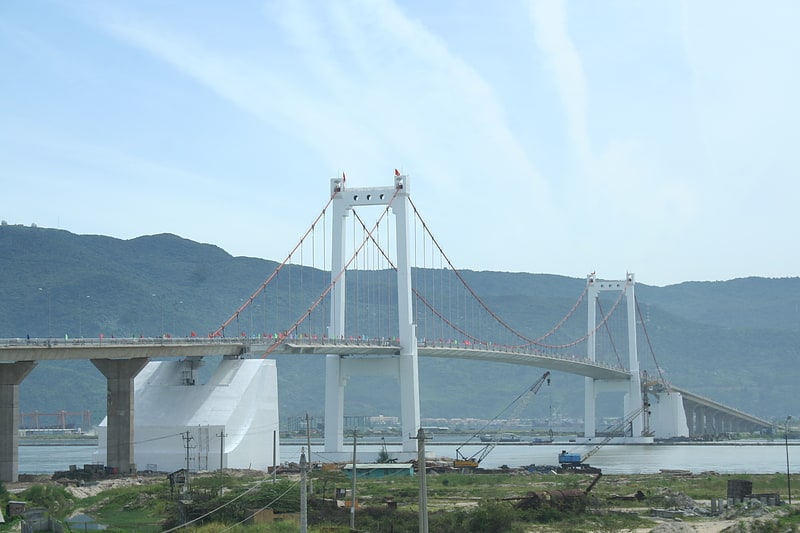
Also known as: Cầu Thuận Phước
Suspension bridge in Vietnam. The Thuận Phước Bridge is a suspension bridge that crosses the lower Han River at Da Nang, Vietnam.
The four-lane, three-span, bridge is 1,850 meters long and 18 meters wide, and has a main span of 405 meters. Its two major pillars are 80m in height. It is the longest suspension bridge in Vietnam, with total investment of nearly 1 trillion dong. The bridge was built with an estimated cost of VND 650 billion (about 42 million US dollars). Consulting firms from China, Cuba and Canada provided assistance.
The construction of the bridge, which began in 2003, was completed on 19 July 2009 when the Prime Minister of Vietnam Nguyen Tan Dung and many high-ranking government officials attended the inauguration ceremony.[17]
Address: Cầu Thuận Phước, Da Nang
Crazy House, Dalat
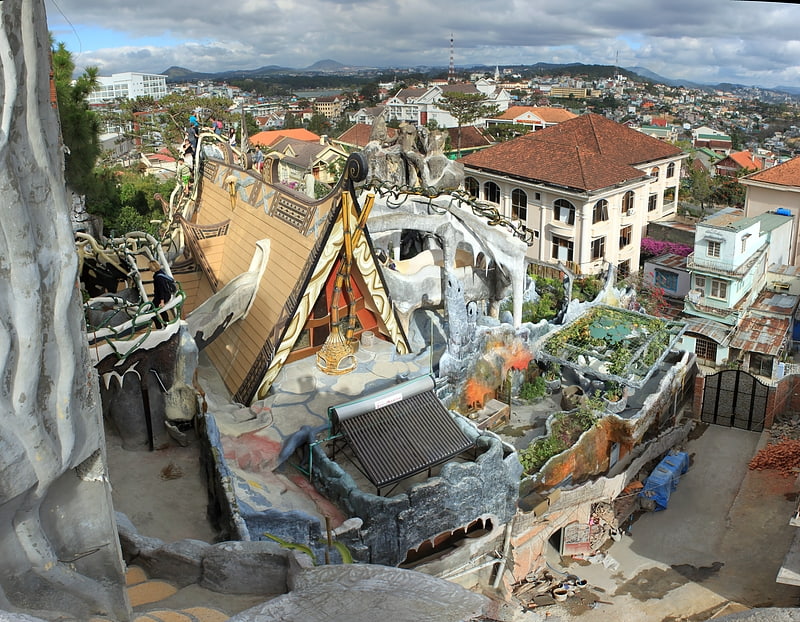
Also known as: Biệt thự Hằng Nga
Guest house with zany architecture. Hằng Nga guesthouse, popularly known as the “Crazy House”, is an unconventional building designed and constructed by Vietnamese architect Đặng Việt Nga in Đà Lạt, Vietnam.
Described as a “fairy tale house” (Hằng Nga, Vietnamese: 姮娥, is the Chinese goddess of the Moon), the building's overall design resembles a giant tree, incorporating sculptured design elements representing natural forms such as animals, mushrooms, spider webs and caves. Its architecture, comprising complex, organic, non-rectilinear shapes, has been described as expressionist. Nga has acknowledged the inspiration of Catalan architect Antoni Gaudí in the building's design, and visitors have variously drawn parallels between it and the works of artists such as Salvador Dalí and Walt Disney. Since its opening in 1990, the building has gained recognition for its unique architecture, being highlighted in numerous guidebooks and listed as one of the world's ten most “bizarre” buildings in the Chinese People's Daily.[18]
Address: 03 Huynh Thuc Khang St, Dalat
Elephant waterfall, Dalat
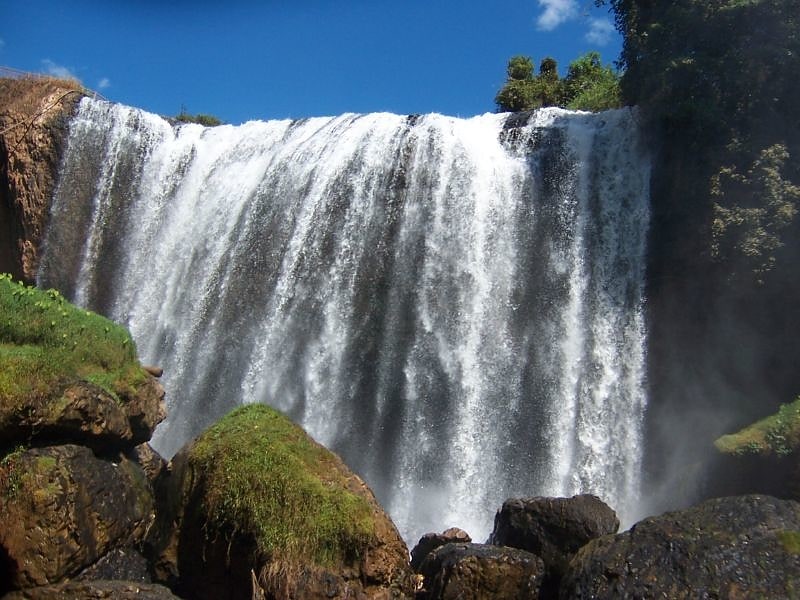
Also known as: Thác Voi
Tourist attraction in Vietnam. Elephant Waterfalls is a waterfall in the Central Highlands of Vietnam. It is located about 25 km from Da Lat on the Cam Ly River. The falls are described as one of the most beautiful of the Central Highlands.
A path with steps carved out into the slippery rocks leads to the foot of the falls. Bats roam around the area, where they inhabit a cave under the waterfalls.[19]
Address: Gia Lam, 670000 Da Lat
Christ of Vũng Tàu, Vung Tau

Also known as: Tượng Chúa Kitô Vua
Religious destination in Vũng Tàu, Vietnam. Christ the King, of Vũng Tàu is a statue of Jesus, standing on Mount Nhỏ in Vũng Tàu, Bà Rịa–Vũng Tàu province, Đông Nam Bộ, Vietnam. The Vietnam Catholic Association built the statue in 1974 and it was completed in 2 December 1994
It is 32 metres (105 ft) high, standing on a 4 metres (13 ft) high platform, for a 36 metres (118 ft) total monument height with two outstretched arms spanning 18.3 metres (60 ft). There is a 133-step staircase inside the statue.
The statue is the largest Christian statue across Asia since 2012, and since its restoration of 1993, it has been a major pilgrim destination for Christians across Vietnam as well as Christian vacationers.[20]
Address: Ha Long, P2, Vung Tau
Hàn River Bridge, Da Nang
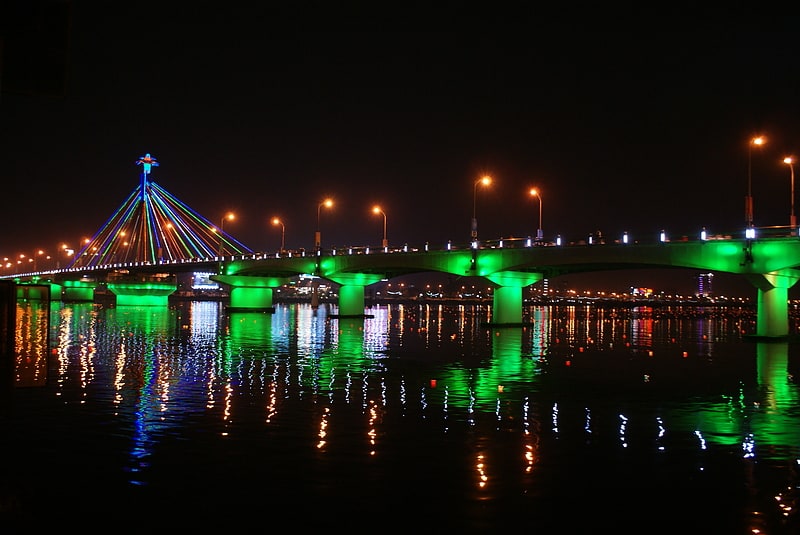
Also known as: Cầu Sông Hàn
Cable-stayed bridge in Vietnam. Hàn River bridge is a cable-stayed swing bridge in Da Nang, Vietnam. Da Nang lies on the west side of the Hàn River and the beaches are to the east.
In the middle of the night, traffic is stopped from crossing the Song Han Bridge and it swings on its axis to allow shipping traffic to pass along the river. The bridge is lit up brightly at night.[21]
Trúc Lâm Temple, Dalat
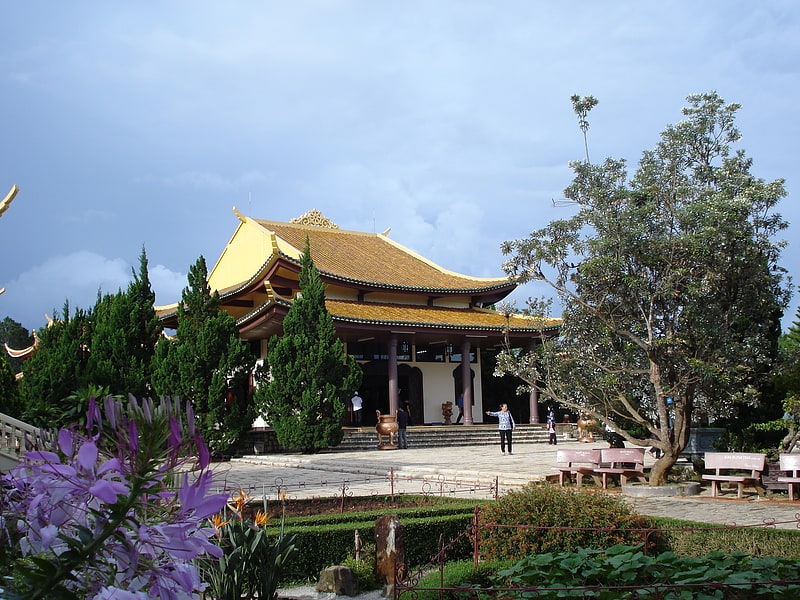
Also known as: Thiền viện Trúc Lâm
Temple in Da Lat, Vietnam. Trúc Lâm Temple is a Trúc Lâm Buddhist temple outside the resort town of Đà Lạt, in Vietnam.[22]
Address: Phường 3, tp. Đà Lạt, Lâm Đồng, Dalat
Bãi Trước, Vung Tau
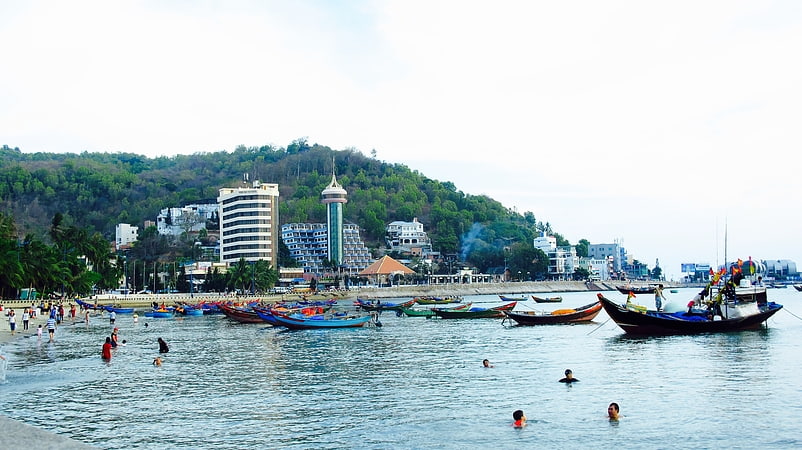
Beach, Park, Outdoor activities
Address: Hạ Long St., Vung Tau
Museum, Can Tho
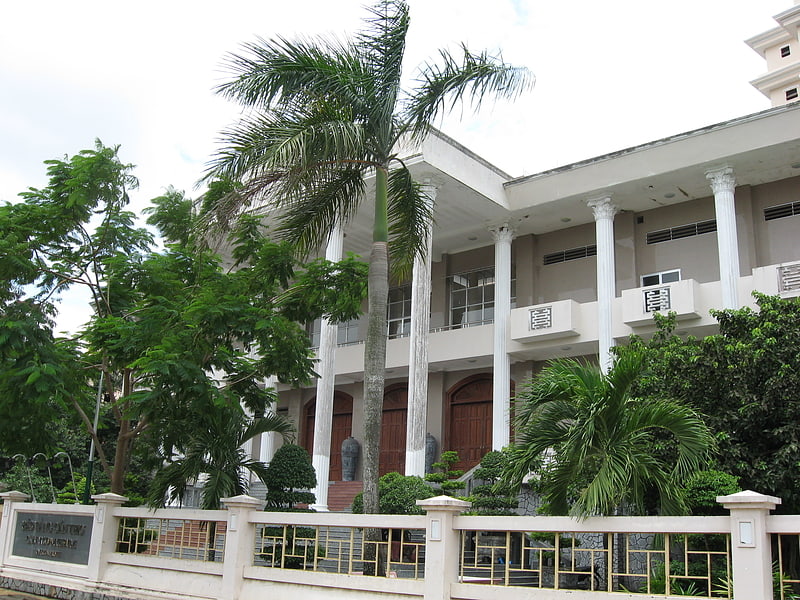
Can Tho Museum is a museum in Cần Thơ, Vietnam. Situated on the corner of Hoa Binh and Tran Quoc Toan streets it was established in 1976 and has more than 5000 objects and historical relics. The museum acknowledges earlier settlement by the Khmer people as well as the contributions of the Chinese Ming refugees and later arrivals. The museum displays the Delta's watercraft by models and watercraft depictions.
Cần Thơ Museum is the largest museum in the Mekong Delta, with a total surface area of 2,700 square meters. The huge museum's exhibits present the history of the Cần Thơ resistance, which was waged against foreign rule. Other notable exhibits are on the region's culture and history. One of the most alluring objects on display at the museum is a life-size pagoda.[23]
Address: 1 Hòa Bình, Can Tho